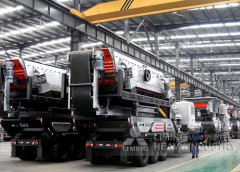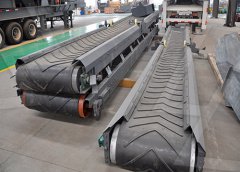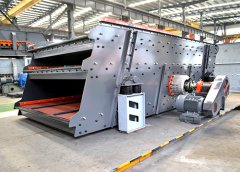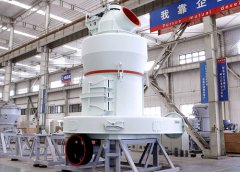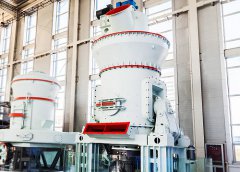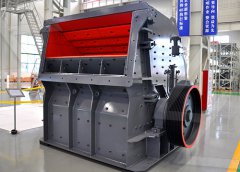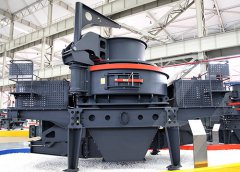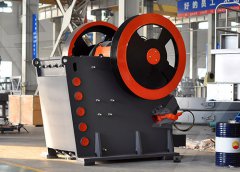
Fact sheet: Aboriginal flaked stone tools First Peoples
Flaked stone tools are one of a range of artefacts that provide Aboriginal people today with an important link to their culture and past. Threats to Aboriginal stone tools Often referred to as the "oldest industry", the use of the millstone is inextricably linked to human history. Integrated into food processes since the Upper Palaeolithic, its use remained constant until the end of the 19th century, when it was gradually replaced by a new type of metal tool. However, it can still be seen in rural domestic installations, such as in India, where 300 million women useMillstone
احصل على السعر
Grindstones The Australian Museum
Grinding stones used to grind seeds and nuts have been found throughout Australia, particularly in arid and semi-arid areas where Indigenous people were reliant on grass Aboriginal people used at least two methods of stone quarrying. One method was to strike the surface of the outcrop at an angle with a hammerstone. Manageable pieces of Fact sheet: Aboriginal quarries First Peoples State Relations
احصل على السعر
65,000-years of continuous grinding stone use at Madjedbebe
72 Altmetric Metrics Abstract Grinding stones and ground stone implements are important technological innovations in later human evolution, allowing the Grinding was usually done on sandstone outcrops, often leaving deep grooves. Sometimes the whole axe was ground to a smooth glossy finish. Aboriginal people often used Fact sheet: Aboriginal ground-edge axes First Peoples
احصل على السعر
Grindstone
History and description Grindstones have been used since ancient times, to sharpen tools made of metal. They are usually made from sandstone. [1] [2] Grinding grooves Prehistory. It is generally held that Australian Aboriginal peoples originally came from Asia via insular Southeast Asia (now Malaysia, Singapore, Brunei, East Timor, Indonesia, and the Philippines) Australian Aboriginal peoples History, Facts,
احصل على السعر
Fact sheet: Aboriginal flaked stone tools First Peoples
Flaked stone tools were made by hitting a piece of stone, called a core, with a ‘hammerstone’, often a pebble. This would remove a sharp fragment of stone called a flake. Both cores and flakes could be used as stone tools. New flakes were very sharp, but quickly became blunt during use and had to be sharpened again by further flaking, astones and boulders are arranged in patterns or shapes such as large circles, animal shapes, boomerangs and mazes. stone arrangements are usually large, measuring many metres across their width. They use stones in a range of sizes. the boulders have been moved to the site. stone tools, animal bones, ochre, pipe clay and Fact sheet: Aboriginal stone arrangements First Peoples
احصل على السعر
Fact sheet: Aboriginal freshwater middens First Peoples
Freshwater shell middens were produced by Aboriginal people collecting, cooking and eating freshwater mussels. Early European settlers observed Aboriginal people, usually women and children, collecting shellfish from rivers, lakes and swamps. Shellfish collecting was relatively easy. Depending on the season, one person could Grinding stones and ground stone implements are important hard-cased seeds and pulverised animals formed a vital component of the late Holocene Aboriginal diet 14,15,16,17,18,19,20,2165,000-years of continuous grinding stone use at Madjedbebe
احصل على السعر
Fact sheet: Aboriginal burials First Peoples State Relations
Aboriginal burials are normally found as concentrations of human bones or teeth, exposed by erosion or earth works. remains may be scattered over a wide area, but well-preserved remains occur as tight clusters about the size of a human body. burials tend to be in soft soils and sand, although some burials also occur in rock shelters and caves.STONE TOOLS AND ARTEFACTS. Stone tools were used to cut wood and bark from trees, to fashion wooden tools, weapons and utensils, and to pound and grind food. Stone was also used to make spear barbs (in south-eastern Australia in the past), spear points, and knives. The range of Aboriginal stone tools and artefacts utilised in Australia STONE TOOLS AND ARTEFACTS Aboriginal Culture
احصل على السعر
Fact sheet: Aboriginal axe-grinding grooves First Peoples
Aboriginal people used axe-grinding grooves to finish partly made axes (known as ‘axe blanks’) or sharpen axes that were worn or chipped. Axe blanks are pieces of stone that Aboriginal people chipped into a basic axe shape at stone quarries and sharpened by rubbing the edges over sandstone. This rubbing action left grooves in the outcropTreaty is the embodiment of Aboriginal self-determination. Treaty provides a path to negotiate the transfer of power and resources for First Peoples to control matters which impact their lives. Treaty is also an opportunity to recognise and celebrate the unique status, rights, cultures and histories of First Peoples.Treaty in Victoria First Peoples State Relations
احصل على السعر
Annual report and plan Advancing the Victorian Treaty Process
Advancing the Victorian Treaty Process Annual Report and Plan 2018-19. pdf 3.96 MB. Under Part 8 of the Treaty Act, the Minister for Aboriginal Affairs is required to prepare an annual report on the work of the State in advancing the treaty process. On 9 December 2019, the First Peoples’ Assembly of Victoria (Assembly) was declared to be Aboriginal Victorians have been clear and consistent in the call for truth-telling as an essential part of the treaty process. In June 2020, the First Peoples’ Assembly of Victoria (Assembly) passed a resolution seeking commitment from the State to establish a truth and justice process. In response, in July 2020 the Victorian GovernmentTruth and Justice in Victoria First Peoples State Relations
احصل على السعر
Fact sheet: Aboriginal surface scatters First Peoples
Surface scatters are the remains of past Aboriginal campsites and other activities. Aboriginal people produced and left the scatter material in the course of their daily life. Activities that produced surface scatters include: manufacture of stone implements for a range of everyday tasks. production and maintenance of weapons, tools and otherAboriginal people usually built shelters or huts fr om bark or wood. Heaped earth was sometimes used as a foundation, or to str engthen and insulate the walls of these structur es.. Fires were frequently built in fr ont of, or near, the shelters. Artefacts such as stone tools were often made close b y. It is likely that the debris produced by Fact sheet: Aboriginal mounds First Peoples State Relations
احصل على السعر
TEACHING NOTES Grinding Ochre (Video) Crackerjack Education
• Aboriginal people also used small grinding stones to crush soft rocks and clays (such as ochre) to make pigments. The pigments were used to decorate bodies for ceremonies, to paint rock art, and to decorate objects such as possum skin cloaks and weapons.2 Year 2Grinding stones are theorised to have played a key role in exploiting the arid and semi-arid zones of Australia, where grass seeds, hard-cased seeds and pulverised animals formed a vital component of the late Holocene Aboriginal diet 14 27. Grinding stones also played a key role in pigment preparation and in the production and use of ground65,000-years of continuous grinding stone use at Madjedbebe,
احصل على السعر
Fact sheet: Aboriginal coastal shell middens First Peoples
Coastal shell middens contain the remains of shellfish eaten by Aboriginal people. They can consist of the shells from a single meal or many different meals eaten in the same location over many years. They can also contain the remains of a more varied diet including fish, seal and kangaroo. Charcoal and hearth stones from fires as well as otherYet for some unknown reason this site, which was registered by the Aboriginal Cultural Materials Committee as Red Hill Camp (ID 27113 grinding stones) in 2009 was de-registered by the Minister for Aboriginal Affairs in January 2015 and is no longer considered a site. It is soon to be destroyed by hard-rock quarrying.Aboriginal sites are an important part of the heritage of the whole
احصل على السعر
Cultural Heritage Management Plan information for Sponsors
A CHMP is required when a 'high impact activity' is planned in an area of 'cultural heritage sensitivity'. These terms are defined in the Aboriginal Heritage Regulations 2018. If your development area is associated with Cultural Heritage Sensitivity, use the Aboriginal Heritage Planning Tool to assist you in determining if your proposedFirst Peoples State Relations. First Peoples State Relations is a newly established group within the Department of Premier and Cabinet,responsible for nation-leading work in the areas of cultural rights, self-determination, treaty and truth an extensive program of priority work with First Peoples. We recognise Victoria’s FirstAbout First Peoples State Relations
احصل على السعر
Eastern Maar achieve native title recognition First Peoples State
On 28 March 2023, at Logan’s Beach in Warrnambool, a large crowd of Eastern Maar community witnessed and celebrated a ceremonial hearing of the Federal Court to recognise their native title rights. Read the published judgement . The steady rain did not dampen the celebratory mood. The day commenced with a smoking ceremony
احصل على السعر
